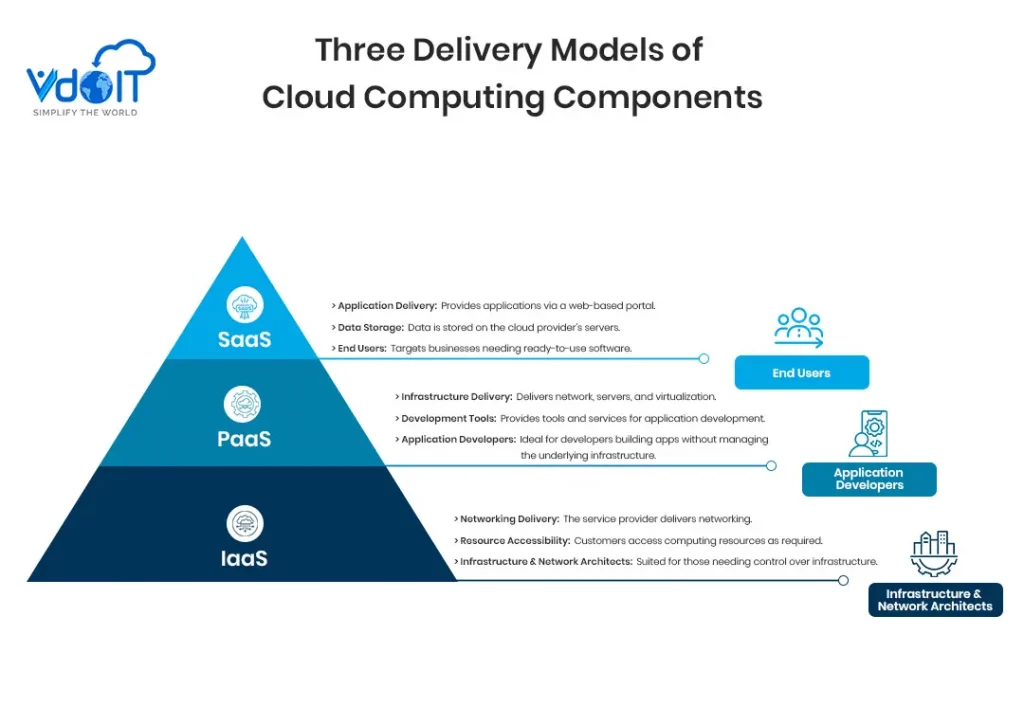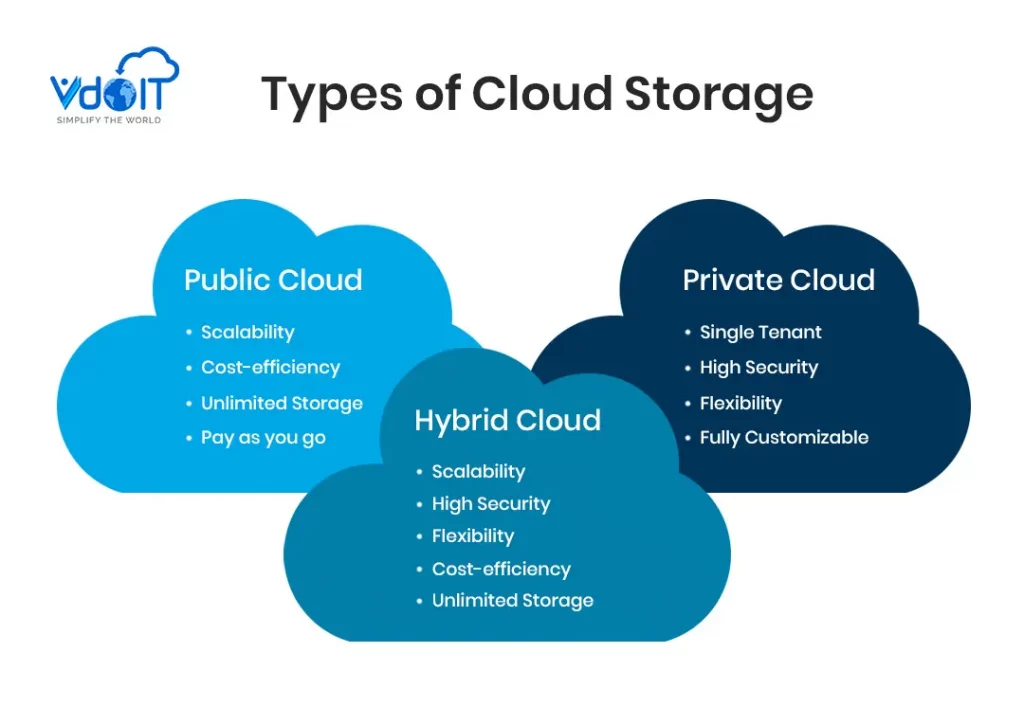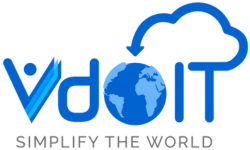In today’s world, cloud computing components are the new standard, particularly in the technologically evolved world with fast internet connections. The cloud solution is perfect for any size and type of business, from a small startup that wants and needs to grow big quickly to a large corporation that looks for ways to optimize its workflow.
So, what is the main driver behind cloud computing that can help us?
In this blog, we will discuss the principles of components of cloud computing architecture and understand the importance of each component in achieving accurate and sound cloud services.
1. Front-End Platform: Is Cloud Computing’s User Interface.
This front-end platform is the first interface users use to contact cloud services. That would be any application that clients execute directly, such as a browser, a mobile app, or any other software communicating with the cloud. This component is essential in designing and implementing an optimal user experience.
Consider this scenario: A business has to depend on the implementation of an efficient cloud-based customer relationship management (CRM) system. The front-end platform refers to the touch point through which an employee can interact with customers, nurture leads, and monitor sales.
A good front-end platform makes it possible to carry out these tasks effectively and easily, a factor that has an impact on productivity and convenience for users.
2. Back-End Platform: A Cloud Infrastructure
This means that while users actually communicate by viewing and clicking on links on the front-end platform, much of the work is done on the back-end platform. This components of cloud computing comprises the servers, storage, databases, and networking equipment used in delivering cloud computing services.
Consider a company like Netflix that provides streaming services. Even when users are busy with the application’s user interface, the corresponding strings store thousands of movies and TV shows, process millions of requests every day and deliver content to users all over the world.
To provide such services at such a scale, there must be a strong back-end platform in place, which is the case here.

3. Cloud-Based Delivery Models: IaaS, PaaS, and SaaS
IaaS comprises delivering infrastructure, PaaS providing platforms, and SaaS delivering software. All models are designed for control, flexibility or overall management, and each has its strengths that can help a company.
IaaS: It entails procuring virtual computing infrastructure through an Internet connection, which helps businesses rent servers, storage, and networks. This model offers the most control and versatility, making it suitable for firms with peculiar infrastructure requirements.
PaaS: It allows developers to deploy and run applications on a platform they don’t have to or will not be able to develop independently. It is practical for developers who do not want to preoccupy themselves with the hardware side of the business but with the coding and development of features.
SaaS: involves using the internet to deliver software applications, with the option of making regular payments for using such applications. Some examples include Microsoft 365, Salesforce, and Google Workspace—SaaS functions simply by allowing companies not to install and manage software, which is convenient.
Therefore, it is important for any business using components of cloud computing to have adequate knowledge of these delivery models. Google Cloud offers more information on cloud-based delivery models than does the general Cloud computing article.
4. Cloud Storage: Securing Data in Cloud Computing
The most significant advantage of adopting cloud computing is that the cloud can accommodate vast amounts of data. Cloud storage means that businesses can access their information at any time and from anywhere, and the information will be safe and not corrupt.

Cloud storage can be categorized into three types:
Public cloud Storage: The first is Public Cloud Storage, where the data is stored in a third-party’s data center. It offers the benefits of scalability and cost efficiency, but it also has disadvantages, such as privacy and security.
Private Cloud Storage: In this model, data is stored on a private cloud infrastructure, which provides greater security than other models. It is especially useful for companies that work with critical information or have strict data protection rules.
Hybrid Cloud Storage: Hybrid cloud storage is an integration of public and private cloud storage that benefits both services. Companies can also adopt a private cloud for sensitive data and use the public cloud for other data.
Everyone who is interested in the foundational concepts of cloud computing and security concerns related to it will find many things in Azure’s Cloud computing dictionary.
5. Virtualization: Maximizing Resource Efficiency
Virtualization is the technology used by cloud providers to mimic servers, storage devices, and the network. Thus, by dividing physical resources into portions and making them available to consumers virtually, cloud providers are capable of providing their users with more efficient and flexible services for the same amount of physical resources.
Such efficiency is one of the reasons that cloud computing is cheap to implement.
Further, virtualization means that cloud providers may increase or decrease resource allocation on demand in a short time. This scalability is especially useful for businesses with varying workloads or turnovers, for instance, e-commerce platforms during festivals or before the end of the fiscal year or tax preparation software during this time of the year.
6. Network: The Support Framework of Cloud Computing
The network is the working platform for cloud computing, upon which all the constituent parts exist and interact. A reliable network helps ensure that data sent across the cloud infrastructure is fast and secure.
It has to accommodate a better density of traffic in a cloud computing environment and connect users to the cloud with certain stability.
Cloud consumers spend a lot of money to ensure the development of strong communication channels for their needs. Gaining insight into the network infrastructure within the cloud environment can assist businesses in selecting the right cloud provider and enhancing their cloud architecture.
7. Security: Data & Applications Security
Risk remains a major consideration for organizations considering outsourcing some of their information technology needs to the cloud. Cloud computing security deals with safeguarding data and applications from unauthorized access.
Key security measures in components of cloud computing include:
Encryption: This means that data will not be readable by any unauthorized person, and even if it is intercepted, it will remain unreadable.
Firewalls: Firewalls manage digital traffic to cloud services and, therefore, prevent unauthorized access to cloud resources.
Identity and Access Management (IAM): IAM systems regulate an entity’s access level by providing proper access control mechanisms to a particular resource.
Compliance: Several industries have legal provisions regarding data protection that must be followed to the letter. Cloud providers can provide compliance certifications to attest that the cloud service delivers the needed compliance.
Security concerns not only the safeguarding of data but also customers’ and stakeholders’ confidence in the organization. It is clear that companies focusing on cloud protection can win in the marketplace by showing that they are concerned about protecting information.
In cloud security, Google Cloud offers more resources on the topic and provides more information about the general aspects of cloud services.
8. Management Services: Managing and Enhancing Cloud Services
The last element to mention in Cloud computing architecture is management services. These services supervise, implement, and perform operations on the cloud, helping to maintain its proper functioning.
Management services in cloud computing include:
Monitoring and Analytics: These tools monitor the usage of cloud resources, the utilization report, and emerging problems in cloud resources.
Automation: Tools that need not require human intervention include scaling resources, deploying an application, or applying a security patch, among others.
Cost Management: There are also general Overhead services that may consist of tools for Cloud Management. Including cloud cost management services, which help the business keep track of its costs and ensure that they do not exceed the limits set.
It is, however, crucial for organizations to manage their cloud effectively and realize the benefits of cloud computing. These services are a valuable means for making the cloud environment highly efficient.
Conclusion: Indulging the Concept of Cloud Computing Architecture.
Knowing the fundamentals of cloud computing is crucial for organizations that wish to harness cloud technology to the greatest extent. Every element, from the front-end platform to the management services. It contributes to delivering the elastic, agile, and secure services that define components of cloud computing.
When selecting a cloud provider to host your applications and data. You should consider a provider with a well-designed infrastructure, secure data protection measures, and effective management solutions.
Visit VDOIT Technologies to learn how cloud computing can help your business. Our expertise lies in cloud services that address your business requirements and suit your needs in the cloud.
FAQs : components of cloud computing
What is meant by components of Cloud Computing Architecture?
Cloud computing architecture is the overall system setup that provides cloud services. We have front-end platforms, back-end platforms, cloud delivery models, storage systems, and security systems.
What is an efficient way to categorize Cloud Computing Platforms based on the critical components?
These subcategories are the Front-End Platform, the Back-End Platform, Virtualization, Cloud Storage, Network, and Management Services. All the components have the specific purpose of providing effective and highly performant cloud services.
In what ways does Cloud Storage improve the organization of data?
Cloud Storage offers unique solutions that are flexible, safe, and convenient for storing data. And Companies working in the field must decide whether they want to opt for Public Cloud Storage, Private Cloud Storage, or a combination of both, known as Hybrid Cloud Storage.
What are the main Cloud-based delivery models?
The three main models of cloud delivery are IaaS, PaaS, and SaaS. All three provide different system control and flexibility for businesses.
What is the role of Virtualization and Networks in Cloud Efficiencies?
Through virtualization, it becomes possible to host several virtual resources on the same physical server; under a reliable network. It is possible to ensure the rapid and secure transfer of data and applications across the cloud infrastructure.

